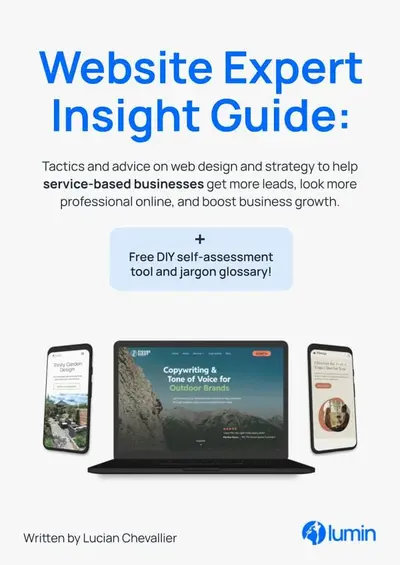Post contents
Achieving a sustainable website is about more than just speed—it’s about aligning your digital footprint with your brand values.
As a business that prides itself on working with outdoor, wellness and sustainable brands who care about their digital footprint, making you more sustainable is what we do. Usually, that’s with our eco-web design, but this time it was done in just a short 1-hour session.
Here’s a story of how a targeted, eco-focussed consultation took The Native Crowd’s site from a carbon-intensive D grade to a top-performing A.
Understanding the heavy footprint
When Marjolein, the founder of The Native Crowd, reached out, she already had a clear goal: reduce the environmental impact of her website. Like many brands I work with, The Native Crowd balances their speciality (sports communication in this case) with a focus on sustainability.
In our initial 60-minute consultation, I quickly evaluated the site’s main carbon culprits. Surprisingly, it wasn’t poor performance or technical flaws, as Google PageSpeed Insights showed the site scored really well.
Instead, the site’s high data transfer rate was the primary issue, mostly due to large image files. This was a crucial insight, as the Website Carbon Calculator graded the site a D based on its carbon footprint.
Tip: Here’s the tool I used to check the total file transfer size of the homepage.
How we reduce the carbon footprint (and some great numbers)
During the call, we took practical steps to optimise Marjolein’s website. Here’s what we focused on:
- Image compression and resizing – Image files are often the biggest bandwidth hogs on websites, so I led Marjolein through a demo on how to compress images effectively. This was more than just reducing file sizes; it involved identifying the ideal image dimensions for her layout using Google Chrome’s developer tools. This way she could compress images without sacrificing quality.
- Live demo – To reinforce the lesson, I provided a live demo, showing exactly how smaller file sizes could impact overall page weight and website performance. This hands-on approach made it easy for Marjolein to implement changes immediately and see results in real-time.
By swapping out the compressed images and optimising just the homepage, we saw instant results in the Website Carbon Calculator score:
- An upgrade from a D to an A grade.
- Went from having a lower carbon footprint than only 45% of other websites up to 83%.
- The homepage now only emits 0.18g of CO2 per page view.
Some great results achieved in just an hour! Eco web design at its smartest.
Tip: If you want to learn more about how to reduce the carbon footprint of your website, read this guide. It contains 9 clear strategies for eco-web design.
More improvements for user experience and conversions
We had about 15 minutes spare in our consultation. We used it to focus on making the site easier to navigate and better highlight The Native Crowd’s value. The advice involved:
- Refining the call to action strategy – making it clearer for users to know what to do next
- Simplifying the services section by categorising them into just 3 core pillars rather than 7
- Reshaping the homepage layout to create a better hierarchy
These tweaks will make the site clearer and easier for visitors to connect with The Native Crowd’s mission and services.
The result
Marjolein’s website now has a much lower carbon footprint, staying aligned with her brand’s ethos. Achieving this A grade on the Website Carbon Calculator was a great first step.
Now, thanks to her new training Marjolein also has the tools and insights to bring the rest of her site up to the same standard. With each page she optimises, The Native Crowd comes closer to reflecting its sustainable mission.
All while leaving with actionable tips on how to me their website more compelling, clearer and ultimately more effective.
What’s next?
For any brand dedicated to sustainability, a website’s digital impact is a great way to show the world you care and that you’re taking care of your corner.
By refining image sizes, improving content structure, and honing in on user experience, even small tweaks can yield significant environmental and engagement benefits. Marjolein’s story highlights that a strategic approach to web design isn’t just about aesthetics. It’s about a commitment to a lighter, greener digital presence.
How inspirational! Some may even say, “a luminary”.
Want to take your website’s carbon footprint to an A grade?
Get a low-carbon website audit with personalised and actionable advice on reducing the carbon footprint of your website. Book here:
Get a low-carbon website audit- Article categories:
- Web design and development







